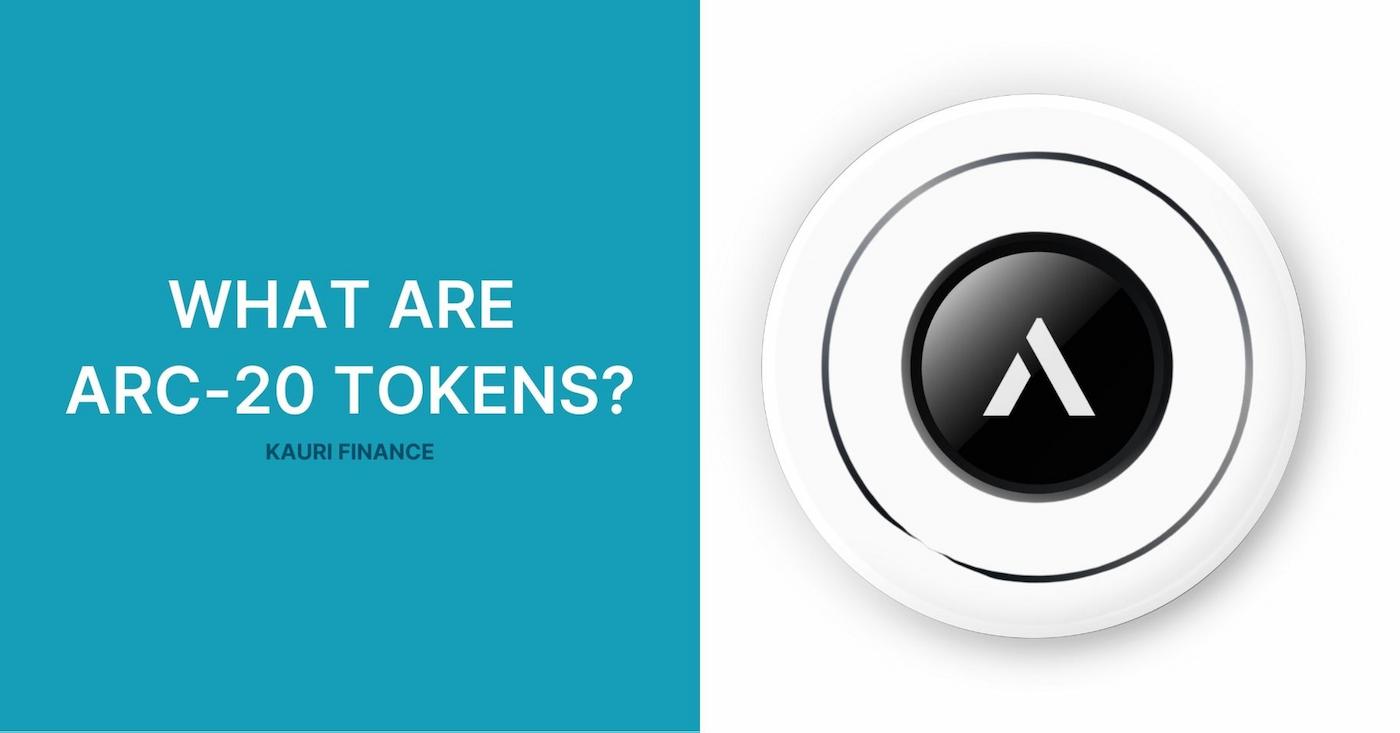
What Are ARC-20 Tokens?

In the Bitcoin ecosystem, as the scope of digital assets expands, new ways of managing and representing ownership are emerging. Atomicals protocol used to create digital assets in Bitcoin is at the center of this evolution. By simplifying the creation, transfer, and management of digital assets, this protocol supports a wide range of applications. ARC-20 tokens based on it represent a new technological level. Based on the Atomicals protocol, these tokens extend the Bitcoin ecosystem by offering a standardized method of representing digital property rights, opening up new opportunities for decentralized finance and beyond.
Kauri Finance will introduce you to the Atomicals protocol and explain the basic concepts behind ARC-20 tokens.
What is Atomicals Protocol?
Atomicals Protocol is a framework designed to facilitate the creation, management, and transfer of digital assets on the Bitcoin blockchain. This open-source protocol enables users to mint digital objects, known as "Atomicals," through straightforward transactions. These Atomicals can represent anything from digital art and collectibles to rights and identities, each linked directly to the Bitcoin network.
Key to the Atomicals Protocol is its ability to integrate seamlessly with the existing Bitcoin infrastructure. Users can manage these digital assets using any Bitcoin wallet, without the need for additional software or third-party services. This compatibility underscores the protocol's design philosophy: simplicity and accessibility. By leveraging Bitcoin's established UTXO model, Atomicals makes it effortless for users to maintain control over their digital assets, ensuring they can be transferred and updated directly on the blockchain.
What are ARC-20 Tokens?
ARC-20 tokens are a novel experimental token standard, deriving inspiration from the broader BRC-20 token framework. Developed using the foundational principles of the Atomicals Protocol, ARC-20 tokens represent a specific class of fungible tokens, often referred to as colored coins. Each ARC-20 token is inherently linked to a satoshi, the smallest unit of Bitcoin, establishing a minimum value for these tokens.
Mechanisms of ARC-20 Tokens
ARC-20 tokens are designed to operate seamlessly within the Bitcoin network, using its native units, satoshis, to represent ownership. This innovative approach allows ARC-20 tokens to be transferred, split, and combined just like traditional Bitcoin transactions. This functionality makes them extremely versatile and adaptable to various use cases in the digital economy.
One of the standout features of ARC-20 tokens is their built-in ticker, symbol, and name services, which ensure that each token is unique and distinguishable. This system prevents duplication and fraud, enhancing the security and reliability of the tokens. The registration of these identifiers is permanent once established, guaranteeing that each token's identity is preserved across all transactions and owners.
Minting Methods of ARC-20 Tokens
ARC-20 tokens can be minted through two primary methods: decentralized minting and direct minting. Decentralized minting allows token creators to set specific parameters such as the total number of tokens and the conditions under which they are minted. This method promotes a fair and widespread distribution of tokens, as any user can participate in the minting process based on the predefined rules.
On the other hand, direct minting involves creating a single transaction that contains the entire supply of tokens. This approach provides creators with full control over the distribution and supply of the tokens, enhancing transparency and trust in the token's management. However, it also requires a significant upfront commitment of satoshis, which can be seen as both a credibility booster and a potential barrier to entry.
Both minting methods come with their own set of benefits and risks. Decentralized minting democratizes the process but can lead to oversupply if not properly managed. Direct minting secures the token supply but may limit participation due to the higher initial investment.
Use Cases of Atomicals Protocol
Atomicals Protocol is remarkably flexible, enabling a wide range of applications across different sectors. In the media industry, it can be used to create and manage digital rights and royalties. For digital collectibles and art, Atomicals can provide a secure and transparent way to verify ownership and provenance.
In gaming, Atomicals can represent in-game assets or characters, enhancing the gaming experience by incorporating real value and ownership into the virtual world. The protocol can also be adapted for digital identity and authentication systems, providing a more secure and user-controlled identity management system.
Furthermore, Atomicals can facilitate peer-to-peer exchanges and atomic swaps, allowing users to trade digital assets directly without the need for intermediaries. This can extend to applications like virtual land registries and social media platforms, where digital ownership and user interaction are key.
Overall, the Atomicals Protocol offers significant potential to revolutionize how digital assets are created, managed, and utilized, promising to extend the utility of blockchain technology far beyond its current applications.
The unique value proposition of ARC-20 tokens lies in their linkage to Bitcoin's satoshi, ensuring that their worth cannot fall below this base value. This feature not only stabilizes the minimum value of these tokens but also aligns them closely with the Bitcoin ecosystem, enhancing their appeal to investors and users seeking stability and security in digital assets. ARC-20's design caters to a growing interest in tokenized assets, positioning it as a pivotal tool in the evolution of decentralized finance on the Bitcoin network.
Atomicals vs. Ordinals
Atomicals and Ordinals protocols both enhance the Bitcoin ecosystem but cater to different use cases and functionalities. Atomicals focus on creating a versatile framework for digital objects, which can include anything from tokens to more complex digital rights management systems. It uses simple rules for minting and managing these objects directly through Bitcoin transactions.
Ordinals, on the other hand, serialize individual satoshis of a Bitcoin to embed data directly onto them, turning each satoshi into a non-fungible token (NFT). This allows for the storage of digital information like images, texts, and software directly on the Bitcoin blockchain.
Key differences include the approach to asset creation and management: Atomicals can involve multiple files and require addresses only for minting and updates, promoting flexibility. In contrast, Ordinals involve each satoshi individually and are used for more permanent, indivisible record-keeping.
These protocols are complementary; Atomicals can be used alongside Ordinals to provide enhanced functionality and flexibility, particularly in scenarios where mutable ownership or complex asset structures are necessary.
Significance of ARC-20 Tokens
ARC-20 tokens represent a significant advancement within the Bitcoin ecosystem, introducing a standardized approach to tokenization on a network traditionally focused on simple currency transactions. By leveraging the Atomicals Protocol, ARC-20 tokens facilitate the creation, transfer, and management of fungible digital assets, which are essential for the development of decentralized finance (DeFi).
The potential of ARC-20 to impact asset tokenization is vast. It offers a bridge between Bitcoin's robust security and liquidity and the nuanced needs of modern financial applications, from tokenizing real-world assets to creating new forms of digital currencies. This can lead to improved market efficiency, increased liquidity and easier access to financial services.
Kauri Finance
Kauri Finance is strategically positioned to leverage the capabilities of ARC-20 tokens, enhancing its suite of services in the digital asset space. By integrating ARC-20 tokens, Kauri Finance offers its users a secure and user-friendly platform for managing these assets, aligning with the decentralized ethos of the technology.
Kauri Finance’s Web3 Wallet is a prime example, providing a non-custodial solution that gives users full control over their digital assets. This feature is crucial for embracing the decentralization principles fundamental to ARC-20. Additionally, Kauri’s crypto-friendly payment cards and streamlined transaction services offer ease of use and seamless integration of digital currencies into everyday financial activities.
